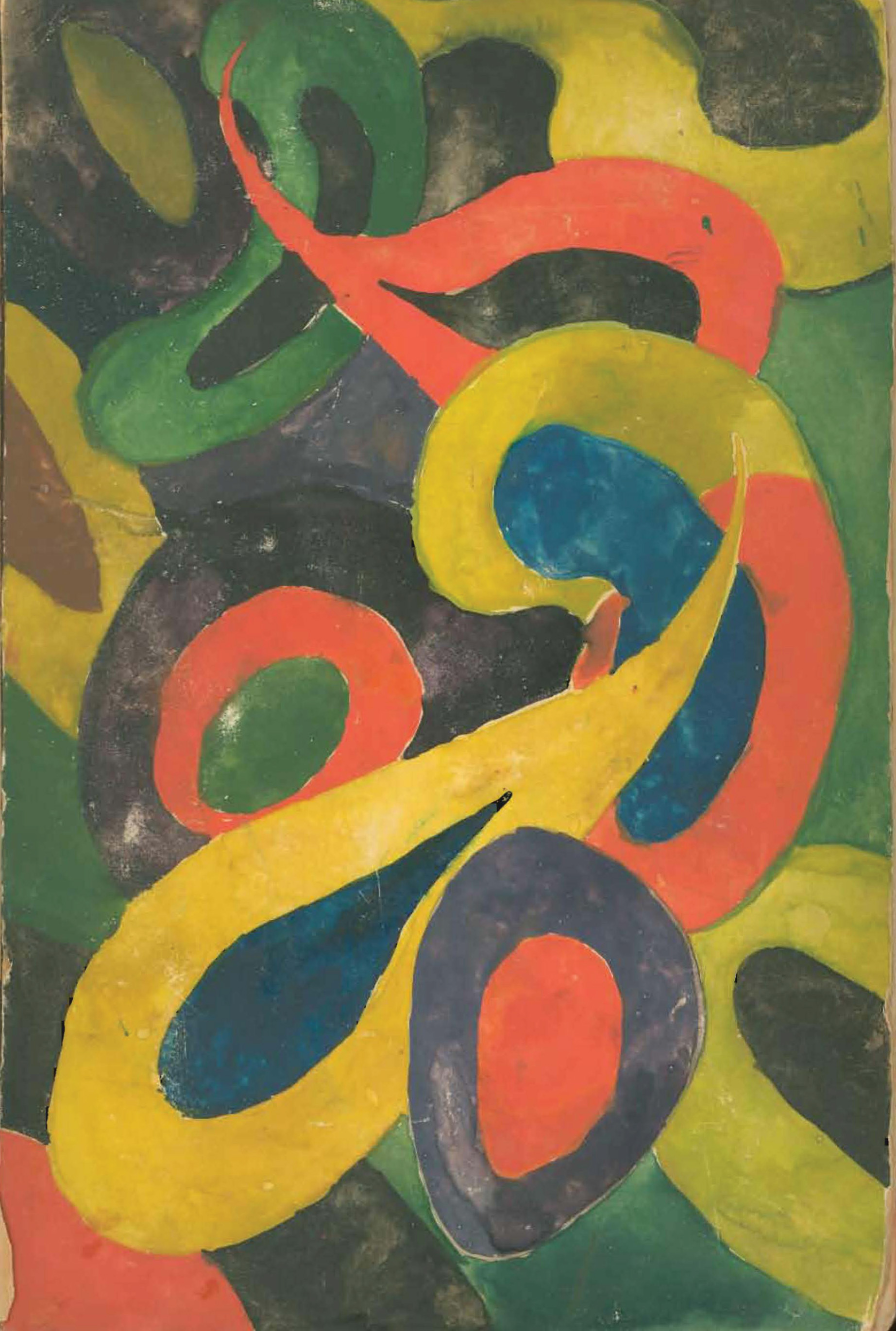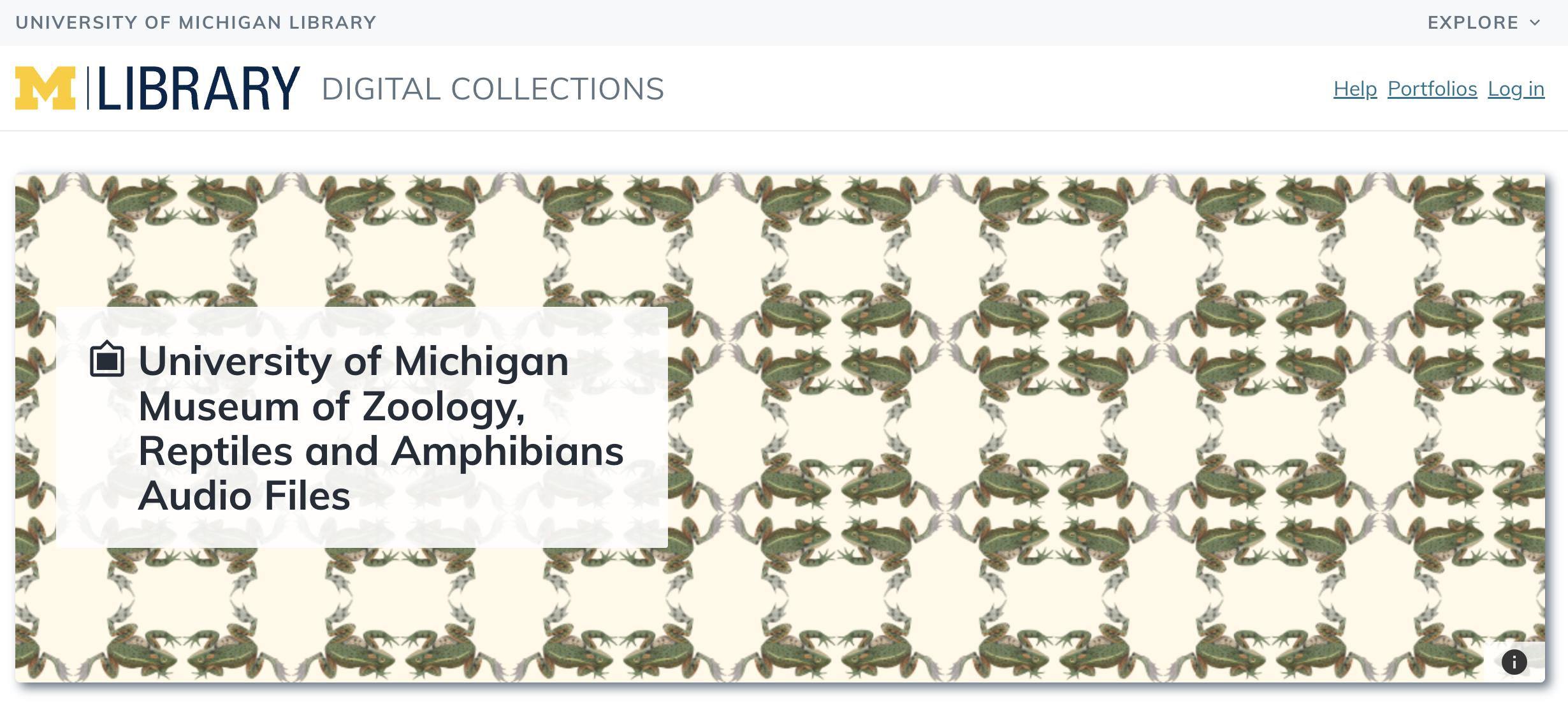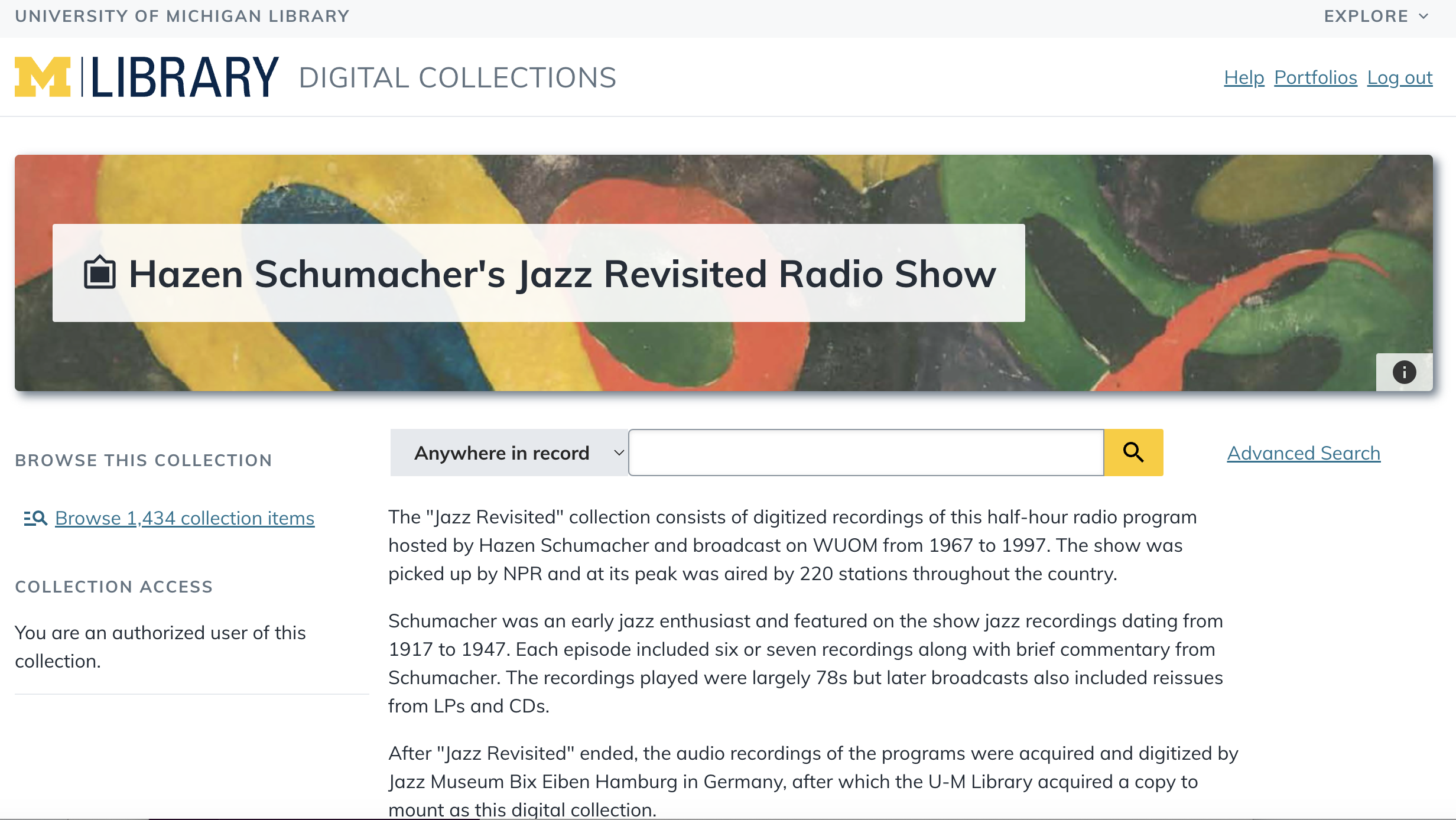Background
The U-M Library’s digital collections recently expanded to include an Audio and Moving Image (or AMI) digital collections interface. (There will be a blog post in the near future describing our work to build that new interface.) As part of that expansion, we realized we needed a different approach to including visuals related to these digital collections. Specifically, we have been working on two audio-only digital collections: University of Michigan Museum of Zoology, Reptiles and Amphibians Audio Files and Hazen Schumacher's Jazz Revisited Radio Show (access to this digital collection is restricted to U-M login). Presenting these online posed a challenge when compared to many of our other digital collections, which include rich visuals that make it far easier to feature an inviting image on the digital collection’s homepage.
A journey into our vast collections
I took on the task of creating banner images from our library collections that would encapsulate the content of these digital collections. My first stop on this journey was the Communication and Marketing department, who are experts in finding whimsical art and graphics that bring our library-branded promotional materials to life. Sure enough, communications designer Kirsten Neelands knew exactly where to look.
Finding images to represent frog sounds was pretty straightforward. Kirsten pointed me to Herpetology Atlas in the HathiTrust Digital Library, and I immediately felt I could use these illustrations to create a few funky frog patterns, which are now featured with this collection. Refresh the page to see all the variations.
However, choosing jazz imagery was not so simple.
I began by searching through the Montgomery Collection, which contains scores in a variety of genres including jazz. Many of these scores have delightful cover illustrations, and I considered creating a collage with them. However, sadly, the audio recordings in the Hazen Schumacher collection did not feature music from the scores from the Montgomery Collection, so I decided to look for something less specific to avoid creating misleading artwork for this digital collection.
Kirsten, as always, had another idea. She shared an image that had been used in a previous marketing piece, an abstract painting with organic shapes in red, yellow, blue, green, and black. The shapes flowed around and through one another, creating a beautiful and dynamic design. Although the image has nothing to do with jazz in a literal sense, we agreed that it represented the concept of jazz in an interesting way — a collection of different sounds and melodies, working together to make something beautiful.

An abstract painting by U-M Professor Rudolph Arnheim.
The image was shared with digital collections stakeholders and received positive feedback. But they wanted to know more about the artwork — Where can it be found in our collections? Who painted it? What is the story behind this work?
And this is where it got interesting.
Enter: Professor Rudolph Arnheim
The Communication and Marketing team had the following information from their previous use of the image: The image is from a copy of Wir sind: neue Gedichte [I am: New Poetry] by the poet Franz Werfel that, along with three thousand other books, was given to the U-M Library by Rudolf Arnheim, renowned perceptual psychologist and art and film theorist who taught at the University of Michigan from 1974-1984 and remained in Ann Arbor until his death in 2007 at 102. Arnheim, who wrote "All perceiving is also thinking, all reasoning is also intuition, all observation is also invention," hand-painted the cardboard cover of this book as well as many others in his collection.
The fascinating history behind this painting made it even more interesting to feature. However, it was important to verify this information and locate the item. Colleagues searching for records of Rudolf Arnheim in our collections found that his slides from research and teaching are available as a special collection from the History of Art Visual Resources Collection, as described in U-M’s finding aids. Additionally, his personal papers are held by the Bentley Historical Library, as referenced in our library catalog. But there was no specific mention of Arnheim’s donated books, and we continued our search.
We reached out to several librarians with deep knowledge of our collections across different subject areas. Deirdre Spencer, history of art librarian, was able to confirm that this work was, indeed, a hand-painted book cover from Professor Arnheim’s personal library that was gifted to the university upon his death. Due to a backlog in cataloging special materials, there is not a digital record of this piece! However, a different copy of the book Wir sind, which does not have the hand-painted cover, is available by request in our general collection.
Conclusion
Through this mystery painting, our team learned a lot about our library’s different materials, departmental experts, and digital presence. While the library’s collections and online presence may be vast, there is still much more work to be done to document and share all of the incredible works we have to offer.
Thank you to Robyn Ness, Kat Hagedorn, Rob McIntyre, Kirsten Neelands, Deirdre Spencer, Kristen Castellana, Jeremy York, and Melissa Levine for their investigative work.

